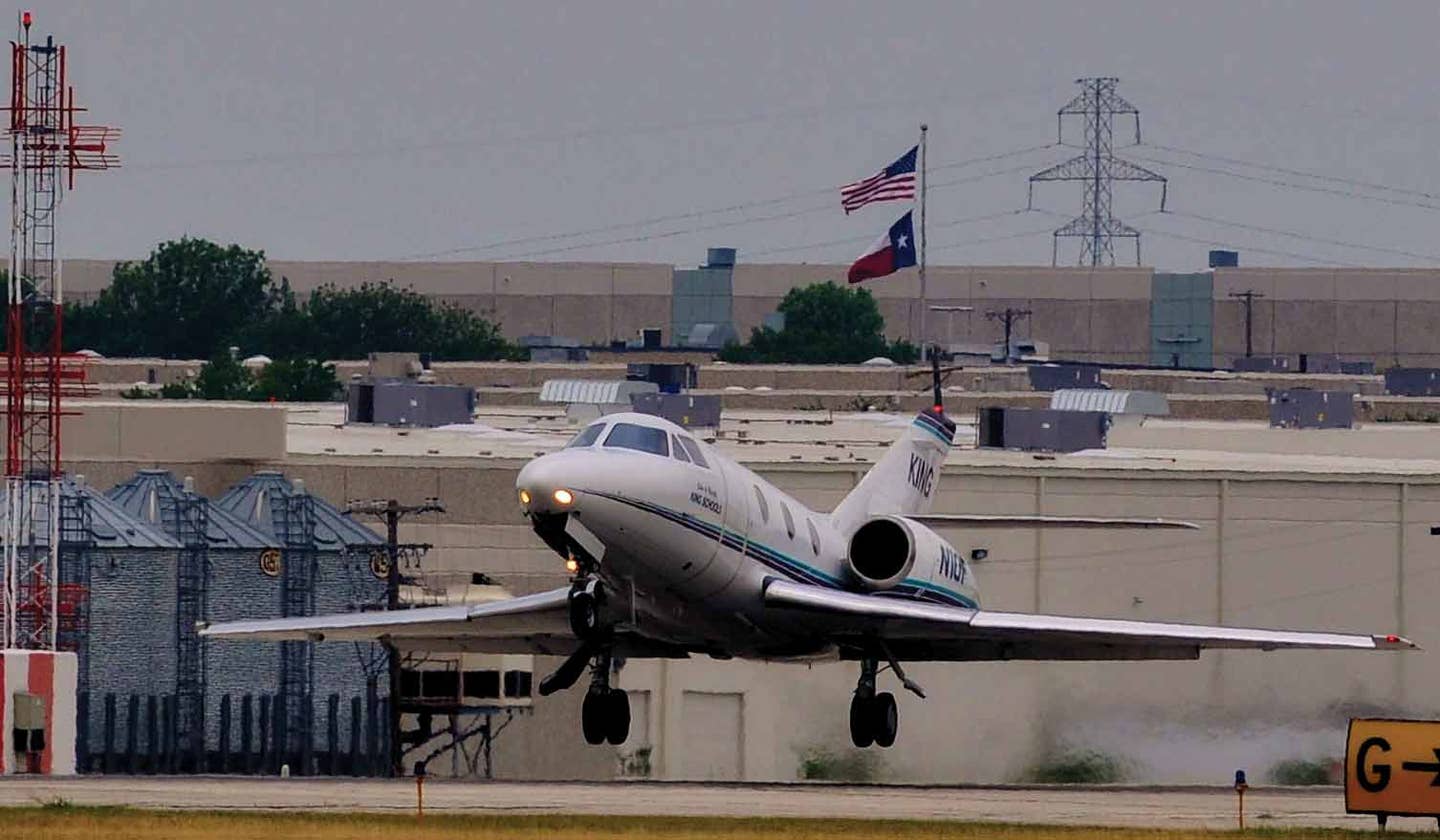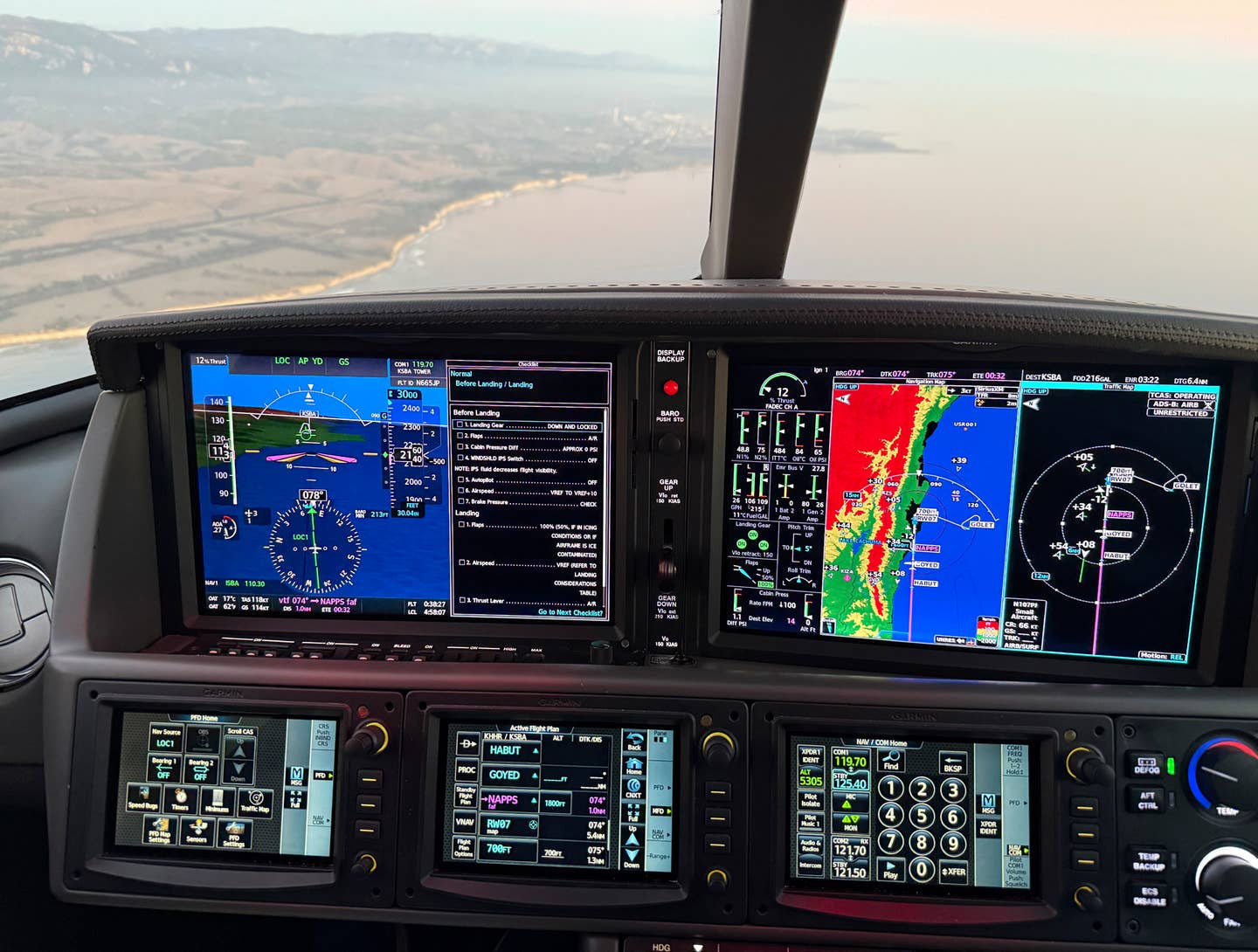
Getting back to the left seat of a complex airplane such as the Falcon 10 after a lengthy hiatus is not an easy feat. John King
“Making power … airspeed alive … 80 knots … V1 … rotate … positive rate.”
Martha, as pilot monitoring, was making the call-outs for my first takeoff in our old Falcon 10 in more than a year. And the takeoff wasn’t pretty.
When it’s lightly loaded, the Falcon 10 takes off like a scalded cat. Early Lear and Falcon 10 pilots used to tape a $100 bill to the cockpit floor between the two pilots and tell passengers in back they could have the cash if they could get to it before the airplane reached 10,000 feet. The money was safe.
“Speed check. You need to pitch up more. We’re getting too fast to raise the gear.”
The initial target pitch-up on rotation for takeoff for this swept-wing jet is 16 degrees. That pitch attitude is designed to give the best angle-of-climb speed in the event of an engine failure. But if you don’t lose an engine, you need to keep bringing the pitch up to about 25 degrees or your speed will get out of hand. I had paused too long before pitching on up. It was clear that I was already behind this high-performance jet.
“You need to pitch back down some. You overshot. We’re getting too nose-high.”
I was also over-controlling and missing my target pitch attitudes. In the Falcon 10, a little bit of over-controlling goes a long way.
“Speed check. Now you’re getting too fast. We haven’t gotten the flaps and slats up yet. Pitch back up — aim for 25 degrees again.”
I was certainly keeping Martha busy. She has a great ability to manage high workloads in flight, and in this case she needed it. With attentive monitoring and timely direction, she soon got both me and the airplane under control.
I was delighted to have my FAA medical certificate back and be flying again, but I was shocked at how much proficiency I had lost in just a little more than a year. After all, I had flown this airplane regularly for 15 years. The return was a humiliating performance.
I was in the same position as thousands of rusty pilots who now have the opportunity to return to flying as a result of BasicMed medical-certification reforms. I am especially fortunate to have an instructor who is knowledgeable and current in the airplane, and dedicated to getting me flying again. Finding just such an instructor would be a good strategy for any pilot returning to the cockpit.
The good news is the rustiness doesn’t last forever. It didn’t take long for Martha’s thoughtful coaching to get me back into shape. She had a great plan and executed it perfectly. First, she arranged for me to do recurrent simulator training at FlightSafety, along with her and her other copilots, in the middle of my hiatus.
Then, when I was first back in a pilot seat in the airplane, she arranged for one of her other qualified copilots, Barry Knuttila, to sit right behind us in the jumpseat to monitor for errors and distraction. Barry, in addition to being CEO of King Schools, is type-rated in the Falcon and frequently serves as a pilot in it.
In a two-pilot operation, the second pilot is supposed to be backing up the captain’s situational awareness and checking for errors. In this case, Barry filled that role while Martha dutifully watched over and instructed me.
In addition to the over-controlling on the first takeoff and being behind the airplane, as I continued to fly I displayed other signs of rust, some of which took me right back to my student-pilot days. For instance, with the infinitely adjustable pilot’s seats and pedals in the Falcon I couldn’t seem to find the “perfect” seat position for landing. I hadn’t had that anxious feeling since my very first solo flights.
Before we got in the air, Martha reviewed our cockpit flows and our standard operating procedures with me. It was invaluable help, but I still found I was occasionally forgetting to follow some of our SOPs when they would have made things a lot easier — most notably failing to set up the flight director before taking the runway instead of fumbling with it in the air.
After giving me a half-dozen or so legs to build proficiency in the pilot-flying seat, Martha moved me over to the copilot seat, which is actually the busier position in our airplane. That’s where my rust showed up the most. Once again, I tended to forget SOPs that would have made things easier — such as failing to set the departure control frequency in standby when putting the tower frequency in the primary position.
It was in the right seat that my loss of muscle memory became the most obvious. In our operation, the copilot does most of the cockpit flow checks, moves the switches and follows up with checklists. Previously, my hands went to the proper switches without my having to think about it. Now I was having to search for them.
The place where the need to think through each step slowed me down the most, and put the most pressure on me, was in the operation of the avionics. When ATC gave us revised clearances, I often found myself fumbling around and having to ask Martha how to do something I could have done without thinking about before. I was thrilled when I got that skill back again.
In most cases my lack of proficiency wasn’t risky. It was just inefficient. For instance, in planning every flight we fill out a takeoff and landing data card. We call it a TOLD card. We write down the conditions for the takeoff and landing — weight, temperature and pressure altitude. Then we show the speeds to fly and the takeoff and landing distances required compared to the runway available. When I returned, Martha went through the card with me and reminded me of the shortcuts for filling it out. Even with Martha’s tutoring, for a while, it took me longer.
There is one piloting benefit from my enforced absence from the cockpit. During the hiatus, I rode around as a passenger and observed the flying of other pilots. As a result, my flying is now smoother and my landings are better — in fact, I’ve had a long string of really great landings — at least up until now.
It is a great thrill to be sharing the cockpit with Martha again. We have always gotten deep satisfaction from being a well-functioning crew, but we are especially enjoying it now. It is as if we are dancing a beautiful and meaningful ballet together. After a lot of hard work on both our parts, Martha reports I am now flying at the level I was before I involuntarily left the cockpit.
Finally, it will be no surprise to anybody that, like all pilots returning to the cockpit after a forced layoff, I am getting greatly renewed joy out of every aspect of my flying. Every minute is just delicious.

Sign-up for newsletters & special offers!
Get the latest FLYING stories & special offers delivered directly to your inbox






